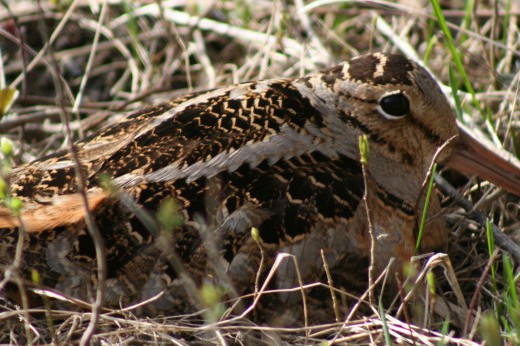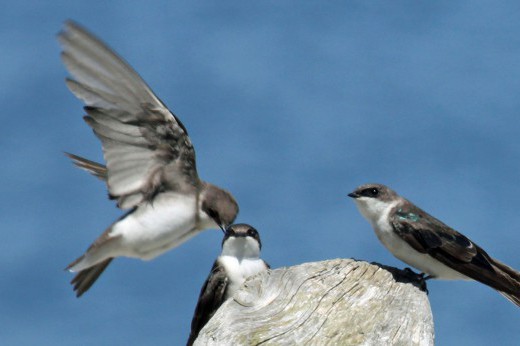The first time I recorded the common nighthawk for my bird list was May of 1990. I say recorded because I never saw the bird, I only heard it. And of all places, it was in the parking lot of Brooklyn Botanic Garden. I was picking up my car in the dark after returning from a BBG birding trip when I heard an auk auk, repeated. The sound was so unusual, and particularly memorable in the evening.
The common nighthawk (Chordeiles minor) is not as common as it used to be. It was never easy to accurately tabulate the population. The bird itself is hard to see, and its nests, or nesting locations more correctly, have always been difficult to find, recently even more so. The name nighthawk is somewhat misleading. It is not a hawk and it usually doesn’t fly at night. The bird is a member of the goatsucker family, a group of large, insect-eating birds.

The nighthawk is active at basically only two times during the day—for the hour around sunset, and then again in the early morning, half an hour before and after sunrise. It feeds on moths, flies, wasps, and other insects that it captures in flight, hunting around street lights, stadium lights, and other such spots. As the number of flying insects has decreased over the last 100 years, the number of nighthawks has, too.
The nighthawk does not actually build a nest. Instead the female will usually lay two eggs on a flat surface sometimes covered with pebbles or gravel. Typical locations include pastures, pine barrens, pebbly beaches, and sometimes flat tar roofs with pebbles—I like to think that the bird I heard back in 1990 nested on a roof somewhere near the Garden. The eggs and young look just like their surroundings—neutral, grayish, and speckled.

So how can you spot this bird? This is where migration comes in. In late August and during September, nighthawks migrate in good-sized flocks. Their flight pattern is unmistakable—a little to the right, a little to the left, with a glide thrown in, but not stopping. Their flight is relatively slow, so good views are generally easy. Their flight is above the tree tops over open areas like meadows and lakes. They have “windows” in their wings—large white spots toward the tip. This is very noticeable by an observer, even without binoculars, looking up at the underside of the bird. In the NYC area there are many good spots to observe the migration. Some good spots are Mount Prospect Park on Eastern Parkway adjacent to BBG, the lake in Prospect Park, the castle in Central Park, and a recent hot spot in Setauket, Long Island, known as the Stone Bridge.
Years ago someone could stay in one spot and see thousands of nighthawks migrating. Now that number has been reduced to about 20, maybe 30 on a good night. Picking the right weather conditions is also advantageous. They like the boost of northwest winds to help in their flight, part of their long journey all the way to southern South America. So for an interesting birding experience, pick a evening before sunset with good northwest winds in an open area and you will be greatly rewarded.
The Birds of Brooklyn series looks at some of the most familiar and fascinating birds that call Kings County their habitat.



